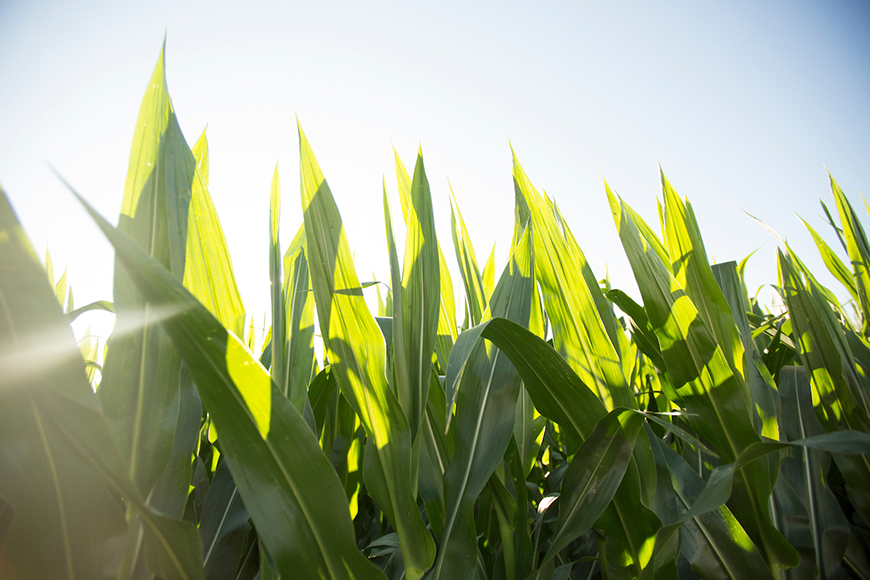Minimize In-Season Yield Loss in Corn

Using in-season imagery can quickly alert you to disease and insect pressure in corn and soybeans, so you and your agronomist can immediately address problems through timely applications of crop protection products. First, let’s take a look at the best times to address in-season pest challenges in your corn crop.
Crop protection applications can be particularly beneficial for corn at the critical growth stages of V5, V8 and VT.
V5: At this stage, the corn plant is switching from a seminal root system to a nodal root system. The growing point of the plant is at the soil surface, exposed to the elements, and the number of kernel rows is being set. This is when you are making your final herbicide applications, so take tissue samples of the top leaves to see how the crop is doing. If tissue samples indicate a nutrient deficiency, talk with your agronomist about the best way to address the situation.
V8: By now, the number of kernels per row is set and corn is entering its biological grand period of growth. If you’re spoon-feeding nitrogen or using any fertilizer program, adhere to the 4 R’s: right rate of fertilizer, delivered in the right form, at the right time and in the right place.
Think twice about applying all of your fertilizer in the fall, when it is easily exposed and can disappear. If it’s not there when the corn is growing from V8 to tasseling, you’ve wasted money. Try putting down 40 percent of nitrogen in the spring as anhydrous with nitrogen stabilizer, then side-dressing later in the season. Soil sampling at this stage can help you determine the amount of side-dressed nitrogen to apply.
VT: This is the most sensitive time in the plant’s life cycle; any stress has the greatest impact on yield. Aerial fungicide applications can help protect plants from fungal diseases or rusts that reduce their ability to fill out the grain. Protect leaves from the ear leaf on up, since they’re the ones that are capturing sunlight.
In our next post, we take a look at ways to minimize in-season yield loss in soybeans. Be sure to consult your WinField retailer about the management strategies that would work best for your crops.
Crop protection applications can be particularly beneficial for corn at the critical growth stages of V5, V8 and VT.
V5: At this stage, the corn plant is switching from a seminal root system to a nodal root system. The growing point of the plant is at the soil surface, exposed to the elements, and the number of kernel rows is being set. This is when you are making your final herbicide applications, so take tissue samples of the top leaves to see how the crop is doing. If tissue samples indicate a nutrient deficiency, talk with your agronomist about the best way to address the situation.
V8: By now, the number of kernels per row is set and corn is entering its biological grand period of growth. If you’re spoon-feeding nitrogen or using any fertilizer program, adhere to the 4 R’s: right rate of fertilizer, delivered in the right form, at the right time and in the right place.
Think twice about applying all of your fertilizer in the fall, when it is easily exposed and can disappear. If it’s not there when the corn is growing from V8 to tasseling, you’ve wasted money. Try putting down 40 percent of nitrogen in the spring as anhydrous with nitrogen stabilizer, then side-dressing later in the season. Soil sampling at this stage can help you determine the amount of side-dressed nitrogen to apply.
VT: This is the most sensitive time in the plant’s life cycle; any stress has the greatest impact on yield. Aerial fungicide applications can help protect plants from fungal diseases or rusts that reduce their ability to fill out the grain. Protect leaves from the ear leaf on up, since they’re the ones that are capturing sunlight.
In our next post, we take a look at ways to minimize in-season yield loss in soybeans. Be sure to consult your WinField retailer about the management strategies that would work best for your crops.

